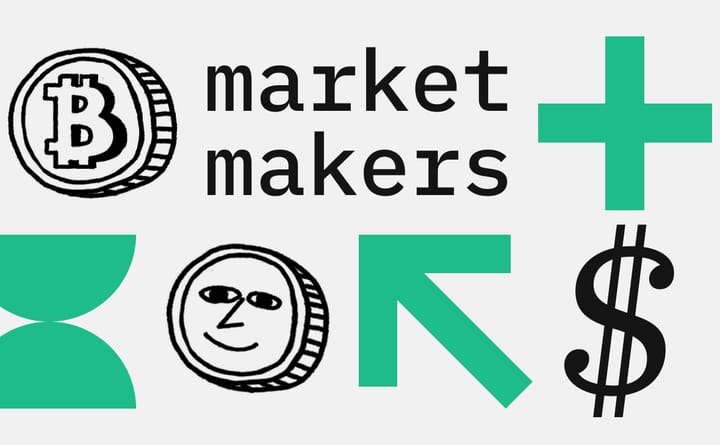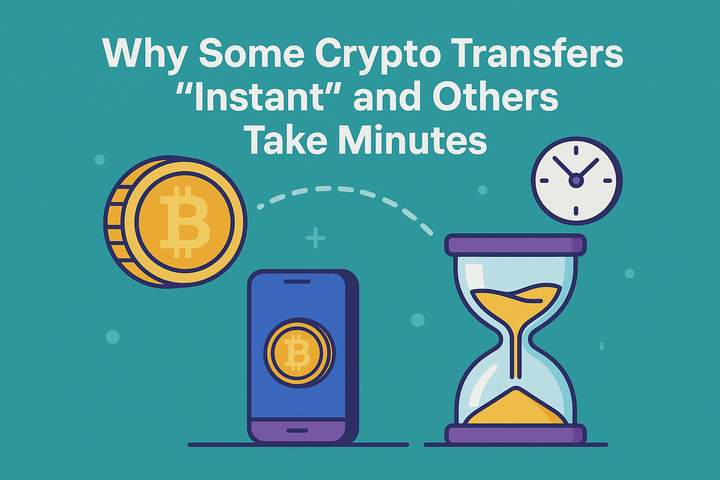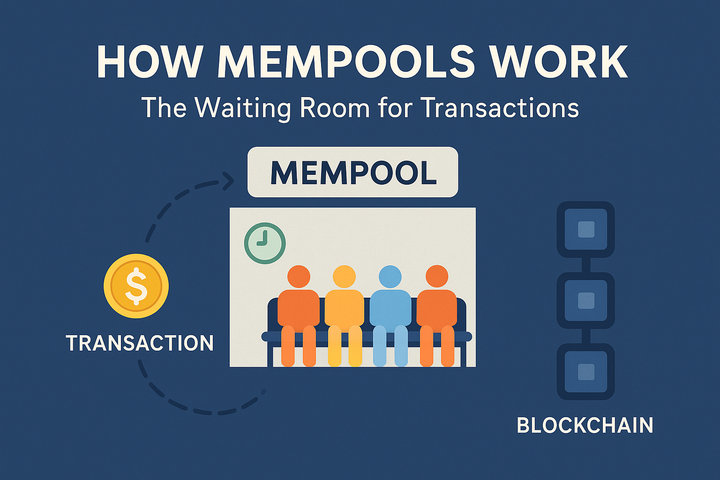Worldcoin Raises $135M to Scale World ID and Orb Network

Worldcoin – a digital identity and cryptocurrency project co-founded by Sam Altman – has secured $135 million in new funding to expand its global identity network. The raise, led by venture backers Andreessen Horowitz (a16z) and Bain Capital Crypto, will fuel the scaling of Worldcoin’s World ID system and the distribution of its Orb devices worldwide. This marks a major investment in Worldcoin’s vision of providing proof-of-personhood on a global scale. Newcomers to crypto may wonder: What exactly are World IDs and Orbs, and why is this funding significant? Below, we break down Worldcoin’s technology and plans in beginner-friendly terms.
What Is Worldcoin and World ID?
Worldcoin (recently rebranded simply as “World”) is a project aiming to create a universal digital identity and financial network. The core idea is to give every person a “World ID” – a unique identifier that proves you are a real, individual human (not a bot or duplicate). Your World ID can then be used anonymously in online apps or crypto services to claim benefits or verify identity without revealing personal details. In essence, Worldcoin wants to solve the problem of authenticating humans online (important in an era of AI bots) by building a global identity protocol.
To achieve this, Worldcoin also introduced a cryptocurrency token called WLD (Worldcoin token). People who sign up and verify their identity with Worldcoin have been eligible for free $WLD token grants as an incentive to join the network. Worldcoin envisions that over time, as World IDs become widespread, WLD tokens could be distributed globally and power a more inclusive digital economy. World ID itself is simply your verified status as a unique person in the Worldcoin system – like a digital passport stamp proving “I am a real human (and only one account per person).” World IDs are privacy-preserving – they don’t reveal your name or personal info, only that you’ve been verified as unique. This system could help fairly enforce one-person-one-account rules in Web3 apps, enable democratic governance (preventing vote manipulation by bots), and even lay groundwork for future universal basic income distribution, according to Worldcoin’s founders.
The Orb: How Biometric Verification Works
Worldcoin’s boldest invention is the Orb – a shiny, spherical device used to verify people’s identities via iris biometrics. An Orb looks like a silver bowling ball-sized gadget, often found at Worldcoin signup stations. So what does the Orb do? In simple terms, the Orb scans your eyes (iris) to create a unique digital code for you, ensuring no one else can sign up multiple times. Importantly, the Orb is designed not to store your actual biometric images – it converts them into encoded data and immediately discards the raw photos. According to Worldcoin, “The Orb... verifies you are a unique human without knowing anything else about you.”
It achieves this by taking a picture of your iris, converting it into a unique cryptographic code, and then checking that code against its database to confirm you haven’t registered before. The biometric data is encrypted and stored only on your phone by default, and the company says it does not retain personal images. In practice, getting a World ID is simple: you visit an Orb in person and have your iris scanned (a painless process taking a few seconds). The Orb device uses sophisticated cameras and AI to verify your “humanness and uniqueness.” Once verified, you receive a World ID – usable via the World app – which lets you cryptographically prove “I’m a unique human” to Web3 services without revealing your actual identity.
Early participants have also received free WLD tokens as a reward for onboarding. This innovative proof-of-personhood mechanism has drawn both praise and controversy – it’s audacious in attempting to enroll millions of people (often by enticing signups with token rewards), yet it raises privacy concerns in some circles about gathering biometric data.
Caption: The Worldcoin Orb is a purpose-built iris-scanning device. It captures an image of a person’s eyes, converts it into a unique code, and instantly deletes the photos – thereby verifying one person one ID while aiming to preserve privacy.
Inside the $135M Funding Round
The recent $135 million fundraising is a strong vote of confidence from investors and provides Worldcoin with significant capital to accelerate its mission. Rather than a traditional equity round, this funding came via a private token sale – World Assets (a Worldcoin affiliate) sold $135 million worth of WLD tokens at current market prices to a16z and Bain, two venture giants that were early backers. Essentially, these investors bought a chunk of Worldcoin’s tokens, injecting cash that the project will use to scale up its operations. According to the World team, the sale was done to “meet increasing demand for Orb-verified World IDs and support expansion of the World network throughout the U.S. and beyond.”
In other words, Worldcoin is seeing rapidly growing queues of people wanting World IDs, and this money will help manufacture more Orbs, deploy them to new cities, and keep the network infrastructure growing. It’s notable that Worldcoin’s user base has grown to sizable numbers already. As of May 2025, more than 26 million people have participated in the World network, with over 12.5 million having completed Orb verification to get a World ID. This indicates a huge increase from just a year prior, suggesting that Worldcoin’s global sign-up drives (often in countries across Europe, Latin America, Africa and Asia) have drawn considerable interest. The new funding will help continue this growth trajectory.
In particular, Worldcoin is now focusing on the United States – a market it had held off on due to regulatory uncertainty. In May 2025, the project launched in several U.S. cities (including Los Angeles, Miami, Austin and others) by setting up Orbs for the first time on American soil. U.S. residents who pre-registered even received an airdrop of 150 WLD tokens (~$150 value) to kickstart adoption. Worldcoin’s CEO Alex Blania and co-founder Sam Altman appeared at a launch event, highlighting plans to roll out Orbs at scale – aiming for 180 million Americans to have access to an Orb by end of 2025, an ambitious target equating to over half the U.S. population. The immediate market reaction to the funding news was positive: Worldcoin’s WLD token price jumped about 14% after the announcement. While token price isn’t our focus here, the spike suggests that investors view the capital raise as a sign of strength and long-term commitment from major backers. After the sale, the circulating supply of WLD increased accordingly, and the project noted that it anticipates becoming one of the first self-sustaining crypto protocols through mechanisms like protocol fees in the future – implying they plan for the network to eventually fund itself via usage, rather than just venture money.
Scaling Plans and Global Identity Ambitions
With fresh funding in hand, Worldcoin’s scaling plans are coming into sharper focus. The overarching goal is to establish World ID as a global identity standard, which means onboarding hundreds of millions (eventually billions) of people. Practically, the team will need to manufacture and distribute many more Orb devices to reach users in diverse regions. Tools for Humanity, the company building Worldcoin’s tech, has even developed a lighter “Orb Mini” prototype to make deployment easier. They are spinning up manufacturing in new locations (such as Texas for Orb production) to meet hardware demand.
On the software side, Worldcoin continues improving the World App – the mobile wallet that holds a user’s World ID and WLD tokens. Recent updates (World App 4.0) have added features like verified human badges on profiles, integration with financial apps, and mini-apps for things like predictions and DeFi lending. All these enhancements aim to increase the utility of having a World ID + wallet in everyday digital life. The more useful the ecosystem, the more attractive it is for new users to sign up for World IDs.
Worldcoin’s vision is deeply tied to the rise of AI and bots. The team often mentions that as artificial intelligence becomes more advanced, it will be harder to distinguish real humans online – so we need “tools to distinguish humans from machines” on a global scale. World ID is positioned as that tool: a way for humans to prove their humanity in an internet increasingly filled with AI agents. In the long term, if World IDs became widely adopted, you could imagine websites, social networks, and crypto protocols all asking users to verify with World ID to ensure genuine personhood (preventing bot armies from exploiting systems). This has profound implications: for example, airdropping tokens or distributing benefits fairly becomes more feasible if you can limit one per human. Sam Altman has even hinted that such an ID system, coupled with AI-driven productivity growth, might enable novel economic models like a form of universal basic income globally – though that remains a speculative future scenario.
Of course, Worldcoin’s aggressive push raises important questions and challenges. Privacy advocates worry about a private company gathering biometric data at scale. Worldcoin insists its process is completely opt-in and privacy-preserving, since biometric images are not stored centrally and all personal data can be deleted by the user. Nonetheless, regulators in some countries have tapped the brakes. In mid-2023, for instance, Kenya’s government suspended Worldcoin enrollment over data privacy and security concerns, pending a review of the project’s legality. The Kenyan data commission even went on to order Worldcoin to delete biometric data collected from local citizens, reflecting the serious oversight on how such sensitive data is handled. Worldcoin has stated it will work with authorities to clarify its privacy measures and comply with all laws. New users should be aware that while Worldcoin offers a free identity and crypto, they are essentially trusting a new technology with their biometric signature – a decision that shouldn’t be taken lightly.
Conclusion
For a newcomer to crypto, Worldcoin might sound like science fiction: orb-shaped iris scanners, global digital currencies, and talk of AI-driven economies. Yet it’s very real – millions have already signed up – and the recent $135 million funding indicates some of the biggest investors believe in its potential. In summary, Worldcoin is attempting to build a globally accessible identity network (World ID) by verifying people’s uniqueness through the Orb device and incentivizing adoption via the WLD cryptocurrency. The new funding will accelerate deployment of Orbs and onboarding of users, especially in key markets like the U.S., aiming to scale the network at “World”-size. If successful, Worldcoin could help solve online identity verification in a decentralized way, enabling a host of applications where being human (and only one human) is the key credential. As with any ambitious project, there are hurdles ahead – from technical scaling to ethical and regulatory scrutiny – but the trajectory so far shows substantial momentum. For beginners in crypto, Worldcoin is a fascinating example of how blockchain technology is being blended with biometrics to address real-world problems. Keep an eye on how Worldcoin navigates its expansion and whether World ID gains traction as a standard. It could very well shape how we prove who we are on the internet in the coming era.



Comments ()